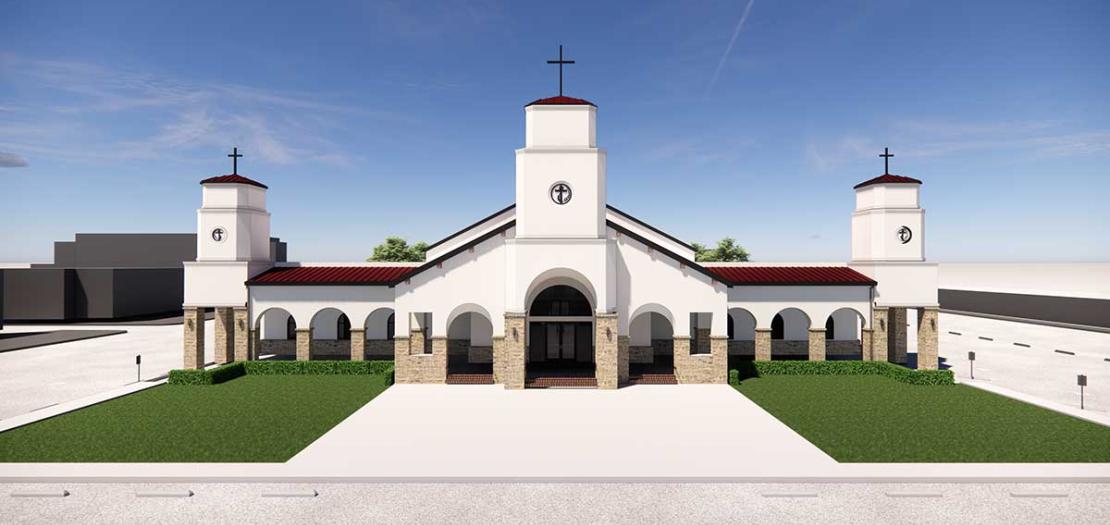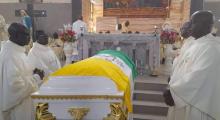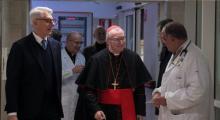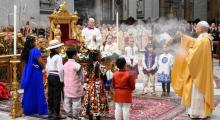Issued by the Catholic Center for Studies and Media - Jordan. Editor-in-chief Fr. Rif'at Bader - موقع أبونا abouna.org

Vietnamese Martyrs Catholic Church
Vietnam is a predominantly Buddhist country. And still, it has a significant Catholic population, namely the fifth largest in Asia. With more than seven million adherents, Catholics make up about 7.4 per cent of the total Vietnamese population. This community traces its roots back to the 16th century, when missionaries from Portugal and Spain arrived in the country.
Early years of Catholicism in Vietnam
The first Catholic missionaries to Vietnam faced challenges in gaining a foothold – as most missionaries in Asia then. In the early 17th century, however, the arrival of Jesuit missionaries marked a turning point. These missionaries, mainly from Italy, Portugal, and Japan, made significant progress in spreading the Christian faith among the Vietnamese people.
In 1615, two priests, Francesco Buzomi and Diego Carvalho, established the first Catholic community in Hoi An. By the 1630s, Alexandre de Rhodes, an Avignon missionary, and the Portuguese Pero Marques had converted more than 6,000 people in Tonkin.
The development of Chu Quoc Ngu
Jesuit missionaries played a crucial role in the development of Chu Quoc Ngu, the modern Vietnamese alphabet.
In the 17th century, Francisco de Pina, Gaspar do Amaral, Antonio Barbosa, and de Rhodes adapted the Latin script with diacritical marks to create a writing system suitable for transcribing the Vietnamese language.
This innovation revolutionized communication and education in Vietnam, while at the same time paving the way for the spread of the Catholic faith to a wider population.
French Missionaries and the Role of Pigneau de Behaine
Beginning in the late 17th century, French missionaries from the Society of Foreign Missions and Spanish missionaries from the Dominican Order became increasingly involved in evangelization efforts in Vietnam. Other missionaries active in pre-modern Vietnam included Franciscans, Italian Dominicans, and Discalced Augustinians.
But among the prominent French missionaries was Pierre Pigneau de Behaine. Arriving in southern Vietnam in the late 18th century, he became a confidant of Nguyen Ánh, the last surviving member of the ruling Nguyen Lords. Pigneau believed that by supporting Nguyen Ánh’s efforts to regain power, he could secure favorable conditions for the Catholic Church in Vietnam and its expansion throughout Southeast Asia.
Pigneau’s influence extended beyond religious matters. He was also a keen political and military strategist. When the Nguyen faced difficulties during the civil war, Pigneau was sent to seek French aid. He successfully recruited a group of French volunteers and provided military and financial support to Nguyen Ánh. Pigneau remained the Nguyen military advisor and de facto foreign minister until his death in 1799.
Enduring faith and challenges
Today, Catholicism continues to have a significant presence in Vietnam. The Church plays a vital role in the lives of many Vietnamese, providing social services, education, and moral guidance. However, the Church has also faced challenges, including periods of persecution during the Vietnam War and under Communist rule.






